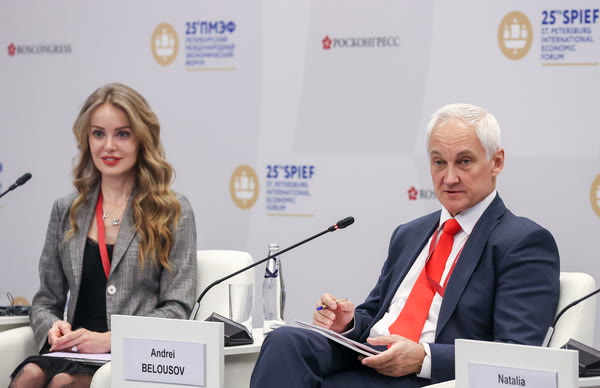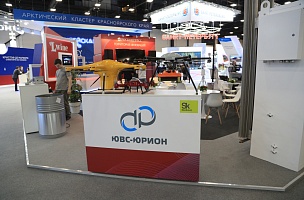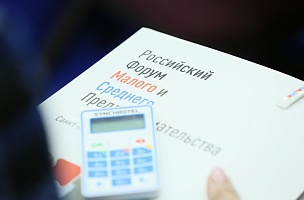Key conclusions
Russian innovation policy has yielded tremendous results
“After all, we began to systematically engage in innovation policy not 30 years ago, we started in the mid-2000s. And this is connected with the names of Andrey Fursenko and Herman Gref. But even this period, more than 15 years, is a very significant one. The national innovation system has been created, we have all the national innovation institutions, we have many engineering centres, as well as development institutions that deal with innovative technologies. We have two main results, in my opinion. Thanks to innovations entire industries have emerged in the country. Pharmaceuticals is one example. Today, we produce the most modern pharmaceuticals, which not all countries can produce. Composite materials are a fairly powerful industry. Polymer chemistry is another strong industry. Right now, an industry of drones is being created, as well as air, and land, and sea vessels,” Andrei Belousov, First Deputy Prime Minister of the Russian Federation.
“In our study "30 Years of Innovation in Russia" we divided these 30 years into three stages. The 90s are saw the first steps, 2001 to 2012 was a period of high expectations, and until 2021 was the period of getting rid of illusions. This periodization fits nicely in the Gartner Hype Cycle stages. Now, there is some hope for the slope of enlightenment. In certain periods, one or another type of policy dominated, linear, project, ecosystem, it established itself as a standard in the 90s. It means that you create a complex network of suppliers and consumers of your innovations, let all the flowers bloom. And you moderate this process. Needless to say, it doesn't work on its own. The ecosystem does not work without linear production. Without a design mode, the system does not function. So, ideally, they need to be combined. The system of development institutions started in the early 2000s. Perhaps, so far, nothing has really worked out for us, because we have not found a balance. Russia needs a new innovation policy. So far, it has not developed into a single synergistic line. It is necessary to form a single centre of responsibility for innovation management. We need to launch a large-scale programme of technological projects, a design mode. We need to encourage successful high-growth high-tech companies,” Dan Medovnikov, Director, Institute of Innovation Management, Higher School of Economics National Research University.
It is necessary to update the model of innovative development
“I would like to say a few words about the work that Medovnikov’s group has done. The experts have taken on a difficult task of describing the innovation policy over the past 30 years. It is too early to sum up the Russian innovation policy. But the approach used in the study is very important. The study was made up of a very difficult exercise that academic scientists rarely do. It is a critical assessment of what has been done and twelve recommendations for what to do next. But another framework can be proposed. Catching up, higher-growth and breakthrough types of economic development. After all, innovation policy is the first derivative of economic policy, a mechanism of self-development, which arises as a result of active economic activities. There are no ministries of innovation or deputy prime ministers for innovation anywhere in the world. There are however people responsible for technological progress in every ministry. Many countries have achieved results in this direction, especially China. They are not building an innovative policy, they are building an innovative society. This is the goal to strive for,” Natalia Ivanova, Head of Scientific Direction, National Research Institute of World Economy and International Relations named after E.M. Primakov of the Russian Academy of Sciences.
PROBLEMS
Lack of a seamless pattern between innovation and supplier
"What does not work is if you look at the structural characteristics of our economy as a whole, they do not change, as if frozen. All this does not change. Everything seems to be working, but I still want to ask “what's the matter”. There are some proposals, perhaps from a scientist coming up with these innovations. And there is someone, perhaps an entrepreneur, who should come and use these ideas. There is one thing that does not work for me in this model. These should be connected. We will start moving when they start making money on innovations. We need to find a model, which would be adequate to our culture, and combine the two processes. All these people and structures must learn to earn money,” Andrei Belousov, First Deputy Prime Minister of the Russian Federation.
“In my opinion, neither the Chinese nor the US experience can be applied to Russia. Seventy percent of innovations in Russia are introduced at the expense of the state. The state is the actual actor in innovation policy. The state acts both as an investor and as a regulator. We need to work on this. We need a seamless bond between the idea and the supplier. Now we see that huge incentives are created for small businesses; small businesses are growing well. What happens next? Companies grow out of SMEs, they grow out of the support that small and medium businesses can count on. And then, when they need a boost, they need to build their own technological process, they lose their preferences. And companies start either splitting up their business or refusing orders,” Natalya Popova, First Deputy General Director, Innopraktika.
Lack of a self-sustaining ecosystem
“The innovation system in Russia today is a sphere that produces knowledge. The state spends quite a lot of money on fundamental science. And this knowledge is used in economic circulation to a small extent. Another problem is that technology growth goals were often set. This was done while such objects could not be held any longer. Technologies do not turn into companies and do not remain in the national jurisdiction. Our system is capable of producing innovations, and we have many companies that have become unicorns. But almost all of them are not Russian companies now. The problem is that as soon as a company breaks through a certain level of innovation, it is forced to move to another jurisdiction. The first reason is the need for access to the market. And the demand for innovation in Russia is extremely low. The second reason is access to capital. Let's say you found a cool niche as an innovator. This company needs to be pumped up with resources very quickly. We have barely one twentieth of the money needed to promote innovation in Russia. This should not be budget money or grants. They cannot replace capital investment. The third issue is access to personnel. We need not only programmers, we need marketing specialists, product managers who are able to package this product and offer it to the market,” Kirill Varlamov, Head, Internet Initiatives Development Fund (IIDF).
SOLUTIONS
Creating conditions for promoting innovation
The system of development institutions started in the early 2000s. Perhaps, so far, nothing has really worked out for us, because we have not found a balance. Russia needs a new innovation policy. So far, it has not developed into a single synergistic line. It is necessary to form a single centre of responsibility for innovation management. We need to launch a large-scale programme of technological projects, a design mode. We need to encourage successful high-growth high-tech companies,” Dan Medovnikov, Director, Institute of Innovation Management, Higher School of Economics National Research University.
“We need to create a self-sufficient ecosystem. Anchor technology companies, technological champions, beacon companies should be created in Russia. They should be high-tech leaders and large enough, with a turnover approaching RUB 1,060 billion. How does one grow such companies? We conducted an analysis, and the only ecosystem that has financial liquidity is the US market. There is no need to be fascinated by the American breakthrough market economy. There are often technological breakthroughs solved in a targeted way, which means that an entrepreneur can be selected there. But people must have done something else somewhere in the world, right? We also found quite interesting tools in Chile and China. They create superagents companies, which are in fact investment funds. What do we propose to do in Russia, especially in the current conditions? We have state capitalism, it is neither bad nor good, but it complicates the issue of innovation. We propose to identify national priorities and record them as a task. This can be a task in any area (in the field of communication platforms or transport, for example). This state task is a market as well. And we should look for investors for these particular tasks. As soon as we have clear priorities with recorded state tasks, we can inform the scientific and technical complex of such demand,” Kirill Varlamov, Head, Internet Initiatives Development Fund (IIDF).
Forming a new model for applying innovations
“There are two adequate models for us. The first is large high-tech projects that are focused on demand understandable to society. The best example is the Crimean Bridge. And this is the model that can work in principle. Additional niches have now opened up for this model in connection with the sanctions, in connection with the completion of our technological sovereignty. The second model, an even more promising one perhaps, is the movement of startups. Every year we generate a huge number of people who are ready to do this. We need to learn how to bring these startups to a state where they become production. The problem is that we have not built a system that identifies these startups in terms of their ability to produce added value”, Andrei Belousov, First Deputy Prime Minister of the Russian Federation.
Creation of tools to support innovative entrepreneurs
“I would not start from models, but from stages and tools. The first one is for companies from zero to 18 months. We created a separate programme for startups, and it was aimed at guarantees. We realized that it does not work. But we realized that banks have one important common feature – they build models based on the entrepreneur's data. This means that the efforts of banks must be combined with the efforts of entrepreneurs, and they should not be interfered with. We have given young companies an opportunity by covering 90% of the risk with us during one year, so that the company can get its initial result. And it worked. The second stage is 18 months to three years. The first requirement of such companies is to focus and test the path they have taken. The acceleration programmes that we launched help in this regard. The second requirement is the service, in terms of the sales market. We started helping companies make purchases under the innovation quota. The third one is three+ companies. We help high-tech companies get loans under a preferential programme adopted six weeks ago. During this time, we have completely digitized this process and received more than 240 applications for RUB 35 billion. These are all potential champion companies. We also collected the needs of 21 largest customers and digitized their needs by specifications. To date, more than 30 companies are starting to work with customers,” Aleksandr Isayevich, General Director – Chairman of the Management Board, Russian Small and Medium Business Corporation.
“Now, high-tech companies in the SME segment can receive preferential loans, this is a huge help. But post-SME companies can receive grants for further growth. They need to become suppliers for large businesses. A reorientation is happening now. There are technological company maps that can make it easy to see which stage in the company’s development is not complete. If the company is not far behind its foreign competitor, we can help it grow. The consolidated demand of the players can provide us with this seamlessness. Do we need supra-ministerial support? It would be significant for high-tech companies, so that they do not fall into interdepartmental wells. Such support would be very needed,” Natalya Popova, First Deputy General Director, Innopraktika.
“We are not involved in politics, we are talking about different projects. But why can't we create a place or a tool where companies can marry their proposal to an investor?” Aleksandr Isayevich, General Director – Chairman of the Management Board, Russian Small and Medium Business Corporation.






